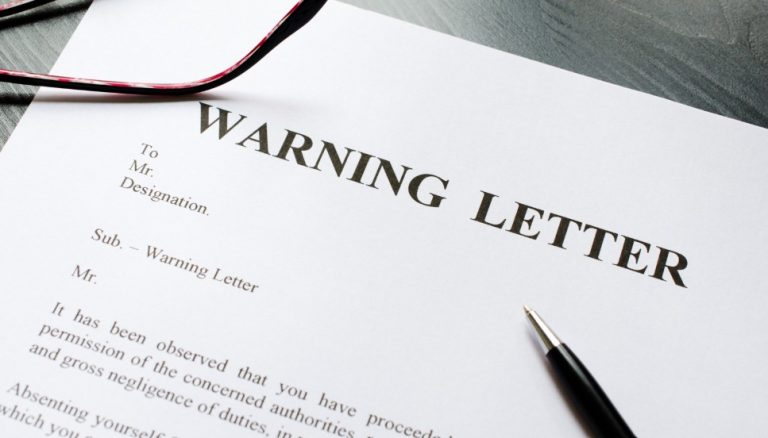Welcome to our comprehensive guide on money laundering. In this article, we will provide you with a clear definition of money laundering and explain the process involved. We will also explore what anti-money laundering measures are and break down the concept of money laundering in simple terms.
Money laundering is an illegal activity that involves making illegally obtained money appear legitimate. It is the process of disguising the origins of funds generated through criminal activities, such as drug trafficking, fraud, or corruption. Money laundering has various stages, including placement, layering, and integration, which help conceal the source of illicit funds. The aim of money laundering is to make it difficult for law enforcement agencies to track and seize the proceeds of unlawful activities.
Anti-money laundering (AML) regulations and measures have been implemented globally to prevent and detect money laundering activities. These regulations place responsibilities on businesses and financial institutions to identify and report suspicious transactions to the relevant authorities.
Stay tuned for an informative and detailed exploration of money laundering and its implications. By understanding this illicit activity, we can work together to prevent and combat money laundering effectively.
Understanding Money Laundering and Its Impact in the UK
Money laundering is a complex illegal activity that has far-reaching implications for the UK’s economy and financial system. By understanding the fundamental concept of money laundering, we can better combat this illicit practice and protect our financial institutions.
The Fundamental Concept of Money Laundering
Money laundering involves a multi-stage process that enables criminals to disguise the origins of their illicit funds. The three primary stages of money laundering are placement, layering, and integration. During the placement stage, criminals introduce their illegal proceeds into the legitimate financial system, often through cash deposits or the purchase of assets. Next, in the layering stage, they engage in a series of complex financial transactions and movements to obscure the source of the funds. Finally, in the integration stage, laundered funds are seamlessly mixed with legitimate assets or investments, making it difficult to trace their illicit origins.
The Industries at High Risk of Money Laundering
Certain industries are particularly vulnerable to being exploited for money laundering purposes. Financial institutions, including banks and investment firms, are prime targets due to their involvement in monetary transactions. Accountants and solicitors also handle large sums of money on behalf of clients, making them susceptible to misuse. Additionally, estate agents and gambling businesses, which frequently handle significant cash transactions, are at high risk of being used as conduits for money laundering.
Legislative Measures Against Money Laundering
To combat money laundering, the UK has implemented a robust legal framework and legislative measures. The Money Laundering Regulations 2017 impose obligations and requirements on businesses to prevent and detect money laundering activities. The Financial Services and Markets Act regulates the financial services sector, ensuring compliance and accountability. Additionally, the Proceeds of Crime Act 2002 empowers authorities to seize and confiscate assets derived from criminal activities, further deterring money laundering.
To illustrate the impact of money laundering, let’s take a closer look at some examples of suspicious activities that may indicate potential money laundering:
| Examples of Suspicious Activity | Possible Money Laundering Indicators |
|---|---|
| A large volume of cash deposits | Attempt to hide the source of funds |
| Frequent and rapid movement of funds between accounts | Layering to obscure the paper trail |
| Unexplained funds from unknown sources | Possible integration of illicit funds |
| Transactions involving high-risk jurisdictions | Effort to exploit weak anti-money laundering controls |

By understanding the money laundering process, identifying high-risk industries, and implementing legislative measures, the UK aims to combat money laundering and safeguard its financial system. It is crucial for businesses and individuals to be vigilant and report any suspicions of money laundering to the authorities.
Exploring The Three Stages of Money Laundering: Placement, Layering, Integration
Money laundering involves three key stages: placement, layering, and integration. Understanding these stages is crucial for detecting and preventing money laundering activities.
In the placement stage, illicit funds are introduced into the legitimate financial system. This can be done through cash deposits or by purchasing assets. Criminals aim to make their illegal proceeds appear legitimate by integrating them into the regular flow of funds.
In the layering stage, complex financial movements and multiple transactions are conducted to obscure the source of the funds. This involves creating layers of transactions, using shell companies, offshore accounts, or complex financial instruments, in order to make it difficult for investigators to trace the origin of the illicit funds.
The final stage is integration, where the laundered funds are seamlessly mixed with legitimate assets or investments. This step is crucial for criminals as it allows them to enjoy the profits of their illicit activities without arousing suspicion. By integrating the funds, they are able to make the laundered money appear indistinguishable from legal assets, making it extremely challenging for law enforcement agencies to differentiate between legitimate and illicit funds.

| Stage | Description |
|---|---|
| Placement | Introduce illicit funds into the legitimate financial system through cash deposits or asset purchases. |
| Layering | Conduct complex financial movements and multiple transactions to obscure the source of the funds. |
| Integration | Seamlessly mix laundered funds with legitimate assets or investments, making it difficult to trace the origin of the illicit funds. |
Understanding the intricacies of these stages is vital in combatting money laundering and disrupting criminal activities.
What is money laundering: A Dive into UK’s Legal Framework
The United Kingdom has implemented a comprehensive legal framework to combat money laundering, an illegal activity that seeks to disguise the origins of illicitly obtained funds. Within this legal framework, several key regulations play a vital role in preventing and detecting money laundering activities.
Money Laundering Regulations 2017
The Money Laundering Regulations 2017 outline the obligations and requirements for businesses operating in the UK, such as banks, financial institutions, and professional service providers, to prevent money laundering. These regulations provide a framework that helps these entities identify and address potential money laundering risks, establish robust internal controls, and carry out due diligence on their customers.
Financial Services and Markets Act
The Financial Services and Markets Act is a crucial component of the UK’s legal framework against money laundering. This legislation aims to regulate the financial services and markets in the country, ensuring compliance, transparency, and accountability. By establishing regulatory bodies and enforcing stringent rules, this act plays a significant role in preventing illicit financial activities, including money laundering, within the financial sector.
Proceeds of Crime Act 2002: Seizing Criminal Assets
The Proceeds of Crime Act 2002 empowers authorities to seize and confiscate assets derived from criminal activities. This act enables law enforcement agencies to tackle money laundering by targeting the proceeds of illicit activities. By seizing and forfeiting criminal assets, this legislation serves as a powerful deterrent, disrupting the financial incentives associated with money laundering and related criminal enterprises.

The combination of the Money Laundering Regulations 2017, the Financial Services and Markets Act, and the Proceeds of Crime Act 2002 forms a robust legal framework in the UK for combating money laundering. These regulations and acts work together to deter and prosecute money laundering activities while safeguarding the integrity of the financial system. By staying vigilant and adhering to these anti-money laundering regulations, businesses and authorities can effectively prevent and address the consequences of money laundering.
Compliance Essentials for Fighting Money Laundering
Compliance with anti-money laundering regulations is essential for businesses to effectively combat money laundering. By implementing robust compliance measures, companies can play a proactive role in preventing and detecting illicit financial activities.
Customer Due Diligence and KYC Norms
Customer due diligence (CDD) and know your customer (KYC) norms are critical components of any effective anti-money laundering strategy. CDD involves verifying the identity of customers and assessing the risks associated with their financial transactions. This process helps identify potential money laundering activities and enables businesses to apply appropriate risk mitigation measures.
Ensuring compliance with KYC norms involves gathering relevant information about customers, such as their identity documents, proof of address, and source of funds. This information helps establish the legitimacy of customer transactions and aids in the early detection of suspicious activity.
Risk Assessment and Management Strategies
Conducting regular risk assessments is vital in identifying and mitigating the risks associated with money laundering. Businesses need to analyze their operations and assess the potential vulnerabilities to money laundering activities.
By identifying high-risk areas, companies can develop appropriate risk management strategies. These strategies may include enhanced due diligence measures, transaction monitoring systems, and employee training programs. Implementing a robust risk management framework helps businesses stay one step ahead of potential money laundering threats.
Reporting Procedures and Penalties for Non-compliance
Reporting suspicious activity to the relevant authorities is crucial in the fight against money laundering. Businesses should have clear reporting procedures in place to ensure timely reporting of any suspicious transactions or activities.
Non-compliance with anti-money laundering regulations can have severe consequences. Businesses may face financial penalties, reputational damage, and possible criminal prosecution. It is imperative for companies to understand and adhere to their legal obligations to prevent money laundering effectively.

| Compliance Procedures | Penalties for Non-compliance |
|---|---|
| Establishing clear reporting channels | Fines and regulatory sanctions |
| Training employees on identifying and reporting suspicious activity | Reputational damage |
| Implementing transaction monitoring systems | Possible criminal prosecution |
The table above highlights the importance of implementing effective reporting procedures and the potential penalties for non-compliance. By following proper reporting protocols, businesses can demonstrate their commitment to combating money laundering and help maintain the integrity of the financial system.
Conclusion
Money laundering is a pervasive illegal activity with serious implications for the global economy and financial systems. It is crucial to understand the concept, process, and impact of money laundering in order to effectively combat this illicit practice. The United Kingdom has enacted comprehensive legislative measures and implemented compliance essentials to prevent and detect money laundering activities.
Businesses play a vital role in fighting money laundering by adhering to anti-money laundering regulations and implementing effective risk management strategies. By conducting thorough customer due diligence and adhering to know your customer norms, businesses can identify and verify the identity of their customers, as well as assess the risk of money laundering. Reporting suspicious activity to the relevant authorities, such as the National Crime Agency, is essential in maintaining the integrity of the financial system.
To prevent money laundering and protect the economy, it is crucial for law enforcement agencies, businesses, and regulatory authorities to work together. By cooperating and sharing information, they can effectively combat money laundering and deter criminals from engaging in this illicit activity. The consequences of money laundering are severe, including financial penalties, reputational damage, and imprisonment. By actively preventing and detecting money laundering, we can create a safer and more secure financial environment.
FAQs
What is the process of money laundering?
Money laundering involves three key stages: placement, layering, and integration. These stages help criminals conceal the source of illicit funds and make it difficult for law enforcement to track and seize the proceeds of unlawful activities.
What is anti-money laundering?
Anti-money laundering refers to the measures and regulations implemented globally to prevent and detect money laundering activities. These regulations aim to ensure compliance and accountability in various industries susceptible to money laundering.
What is money laundering in banking?
Money laundering in banking refers to the use of the banking system to disguise the origins of illicit funds and make them appear legitimate. Banks have strict regulations and protocols in place to detect and prevent money laundering activities.
How do banks check for money laundering?
Banks use various methods to check for money laundering, including customer due diligence, transaction monitoring, and reporting suspicious activities to regulatory authorities. They also employ automated systems and algorithms to identify patterns and anomalies indicative of money laundering.
What are the examples of suspicious activity related to money laundering?
Examples of suspicious activity related to money laundering include frequent large cash deposits or withdrawals, complex transactions involving multiple layers, unusually high-value transactions with no clear business purpose, and transactions involving high-risk jurisdictions or individuals.
How can businesses prevent money laundering?
Businesses can prevent money laundering by implementing compliance essentials, such as customer due diligence and know your customer norms, conducting risk assessments, implementing effective risk management strategies, and reporting any suspicious activity to the relevant authorities.





